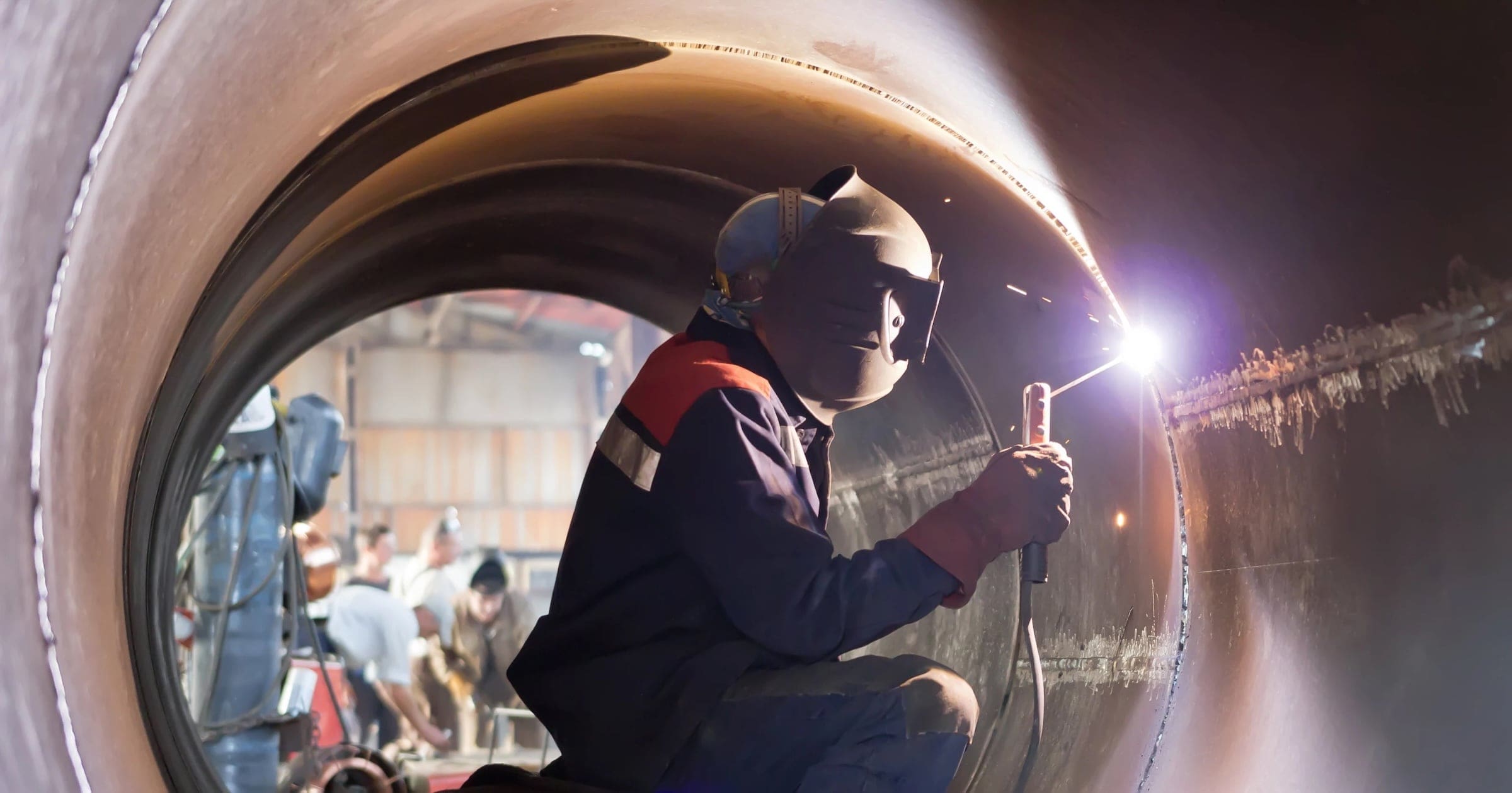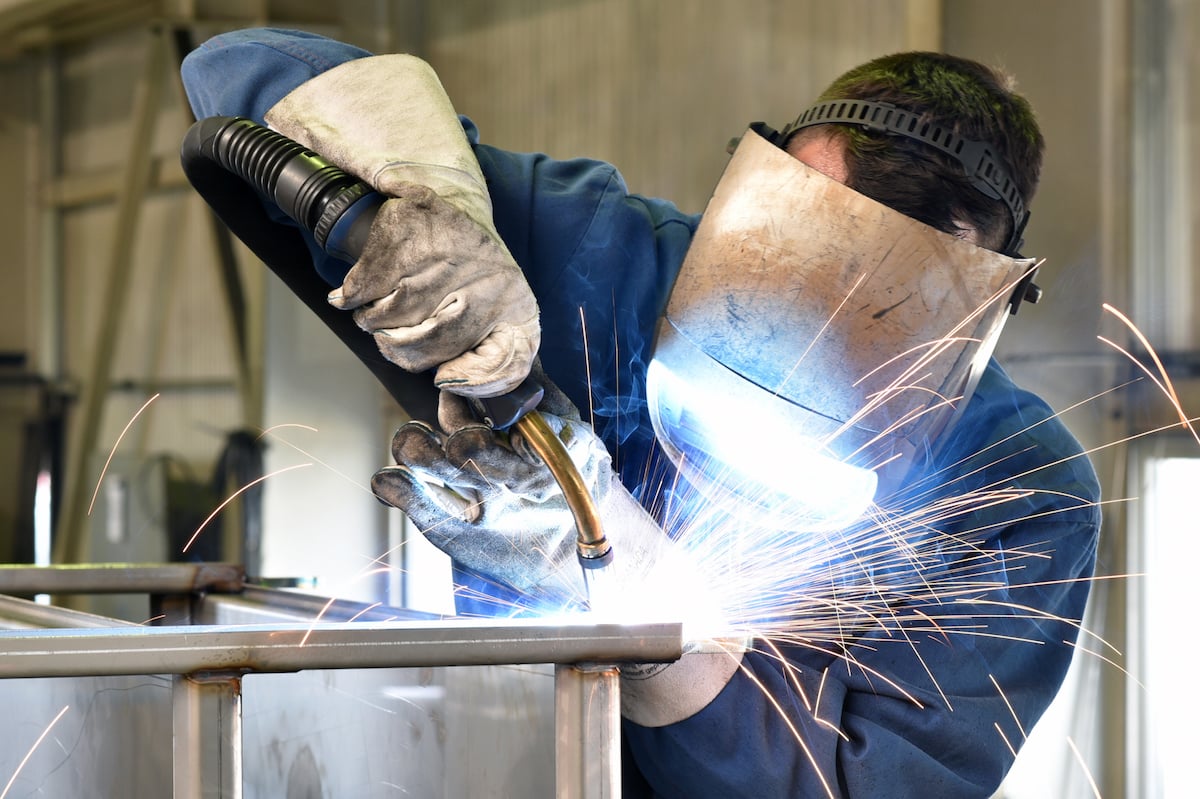Common problems explained and solved by Montana Mobile Welding and Repair Belgrade Fabrication
Usual Welding Repair Service Issues and Just How to Address Them Properly
Welding repairs frequently come across a variety of issues that can jeopardize the stability of the end product. Typical issues include inadequate penetration, porosity, and imbalance, amongst others. Each issue presents unique difficulties that call for particular methods for resolution. Comprehending these concerns is important for welders aiming to improve their abilities and results. This discussion will discover these usual welding repair concerns and reliable methods to address them.
Insufficient Infiltration
Inadequate penetration occurs when the weld steel falls short to totally fuse with the base product, leading to weak joints and possible structural failures. This problem commonly stems from inadequate warm input, incorrect electrode angle, or incorrect welding speed. Welders may encounter insufficient infiltration as a result of a miscalculation of the essential specifications for a details material thickness or kind. Additionally, contamination on the base product's surface can impede effective bonding, aggravating the problem. To deal with insufficient penetration, welders must assure suitable settings on their devices and maintain a tidy job surface. Normal examination of welds is recommended to identify any deficiencies early, enabling for prompt corrections and the prevention of jeopardized architectural integrity in welded assemblies.
Porosity
Porosity is an usual defect in bonded joints that manifests as little gas bubbles caught within the weld steel. This issue can endanger the stability of the weld, resulting in decreased stamina and prospective failing under stress. Montana Mobile Welding and Repair. Porosity normally emerges from contamination, moisture, or incorrect welding techniques, which enable gases to get away into the liquified weld pool. To attend to porosity, welders need to guarantee appropriate surface area preparation, preserve a tidy functioning setting, and use suitable welding specifications. In addition, selecting the best filler product and protecting gas can reduce gas entrapment. Normal evaluation and screening of welds can assist determine porosity early, guaranteeing timely restorative actions are taken, thereby maintaining the top quality and integrity of the bonded framework
Misalignment
Misalignment in welding can arise from various variables, consisting of inappropriate arrangement and thermal growth. Comprehending the root triggers is essential for effective resolution. Several improvement methods are offered to straighten parts and guarantee architectural stability.
Reasons for Imbalance
Welding misalignment often comes from a range of underlying concerns that can jeopardize architectural stability. One key reason is improper fit-up of elements prior to welding, which can bring about spaces and unequal surface areas. Variations in thermal development throughout the welding procedure can also cause distortion, especially if the products being joined have various coefficients of development. In addition, poor clamping and fixturing might stop working to hold parts firmly in location, bring about activity throughout welding. Inadequately kept equipment, consisting of welding machines and devices, might present disparities in the weld grain, further adding to imbalance. Operator mistake, stemming from not enough training or experience, can also play a significant role in creating misaligned welds.

Modification Techniques Offered
Resolving misalignment efficiently needs a mix of restorative strategies tailored to the specific problems at hand. One typical approach is making use of jigs or components to hold components in the proper setting during welding, making certain regular placement. In addition, preheating the products can help in reducing distortion and improve fit-up. For significant imbalance, mechanical realignment strategies, such as using hydraulic jacks or clamps, can be utilized to remedy the placement before welding. Post-weld heat treatment may additionally be needed to ease anxieties brought on by misalignment. Lastly, mindful examination and adjustment during the arrangement stage can prevent imbalance problems from coming to be substantial problems, promoting a smoother welding process and boosting overall architectural honesty.
Distortion
Distortion is an usual obstacle in welding that can emerge from various aspects, including uneven cooling and heating. Comprehending the root causes of distortion is crucial for carrying out reliable avoidance methods. Resolving this concern not only boosts architectural honesty but likewise enhances the overall quality of the weld.
Root causes of Distortion
When based on the extreme warmth of welding, products typically undergo adjustments that can result in distortion. This sensation primarily occurs from thermal growth and contraction throughout the welding procedure. As the weld area warms up, the material expands; upon cooling, it gets, which can produce interior stresses. On top of that, uneven home heating throughout a work surface can worsen these stress and anxieties, causing warping or bending. The kind of material likewise plays a substantial role; steels with varying thermal conductivity and coefficients of growth may react differently, bring about unpredictable distortions. In addition, bad joint style and poor fixturing can add to imbalance throughout welding, increasing the possibility of distortion. Comprehending these causes is crucial for reliable welding repair service and avoidance techniques.
Prevention Techniques
Reliable prevention techniques for distortion during welding concentrate on managing heat input and guaranteeing proper joint style. Maintaining a consistent warm input helps to decrease thermal expansion and contraction, which can lead to distortion. Utilizing strategies such as pre-heating the workpiece can likewise minimize the temperature level slope, promoting uniform heating. In addition, picking proper joint designs, such as T-joints or lap joints, can improve security and lower tension concentrations. Implementing appropriate fixturing to secure the work surfaces in position better help in keeping placement throughout the welding procedure. Finally, staggered welding series can distribute heat a lot more uniformly, protecting against localized distortion. By applying these strategies, welders can greatly lower the chance of distortion and enhance the overall top quality of their welds.
Fracturing
Cracking is an usual problem experienced in welding repairs, often resulting from numerous elements such as inappropriate cooling prices, material option, or poor joint preparation. The incident of cracks can considerably compromise the integrity of the weld, resulting in possible failings during operation. To address this problem, welders have to initially assess the origin, making certain that products are compatible and suitably selected for the details application. Additionally, regulating the air conditioning rate throughout the welding process is crucial; fast air conditioning can induce stress and cause fracturing. Correct joint layout and prep work likewise add to minimizing the risk. Implementing these methods can boost weld top quality and toughness, inevitably lowering the probability of breaking in completed weldments.

Insufficient Fusion
A significant concern in welding repairs is incomplete blend, which takes place when the weld metal does not appropriately bond with the base material or previous weld passes - Montana Mobile Welding and Repair Belgrade Welding. This issue can result in weak points in the joint, potentially compromising the integrity of the bonded framework. Variables adding to insufficient fusion include not enough warmth input, incorrect welding technique, and contamination of the surface areas being signed up with. To address this problem successfully, welders should assure proper pre-weld cleaning and surface area preparation, along with adjust their welding specifications to achieve sufficient infiltration and fusion. Routine inspection during the welding process can likewise help determine incomplete blend early, enabling timely restorative measures to enhance the overall quality of the weld
Overheating
While welding fixings can boost structural integrity, overheating presents a considerable difficulty that can lead to product degradation. Extreme warm during welding can change the mechanical properties of steels, leading to reduced toughness, increased brittleness, and bending. This sensation is especially crucial in high-stress applications where structural dependability is vital. Identifying overheating can involve aesthetic evaluations for discoloration or distortion, along with checking temperature during the welding process. To alleviate the risks related to getting too hot, welders must employ suitable techniques, such as controlling warmth input, adjusting travel speed, and utilizing suitable filler materials. In addition, applying pre- and post-weld warmth therapies can help bring back material homes and enhance the overall top quality of the repair service, ensuring long-lasting performance and safety and security.
Frequently Asked Questions
What Are the Usual Signs of a Welding Flaw?

Exactly How Can I Check My Welds for High quality?
To evaluate welds for top quality, one can make use of visual assessments, ultrasonic testing, and radiographic techniques. Each strategy assures structural integrity, determines flaws, and verifies adherence to specified standards, ultimately improving the dependability of the bonded joints.
What Security Precautions Should I Take While Welding?
When welding, one should focus on safety and security by wearing appropriate personal protective equipment, guaranteeing appropriate air flow, securing combustible materials away, keeping a tidy office, and understanding environments to stop mishaps and injuries.
Can I Fix a Weld Without Remodeling the Entire Joint?
Repairing a weld without remodeling the entire joint is possible, depending upon the damage (Montana Mobile Welding and Repair). Methods such as grinding, adding filler material, or using a welding procedure can properly address specific flaws while preserving the bordering framework
What Equipment Are Necessary for Effective Welding Repairs?
Vital tools for efficient welding repair services include a welding machine, cable brush, grinder, safety gear, clamps, and filler materials. Each device plays a vital role in making sure top quality and security during the fixing process. Porosity commonly emerges from contamination, dampness, or inappropriate welding methods, which permit gases to get away right into the liquified weld swimming pool. Improperly kept devices, consisting of welding equipments and tools, may introduce disparities in the weld grain, additional adding to imbalance. When subjected to the extreme warm of welding, materials usually undertake modifications that can lead to distortion. Fracturing is an usual issue run into in welding repairs, commonly resulting from different elements such as incorrect air conditioning prices, material choice, or poor joint prep work. A significant concern in welding repairs is incomplete combination, which happens when the weld metal does not properly bond with the base material or previous weld passes.